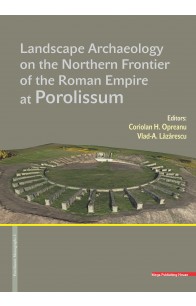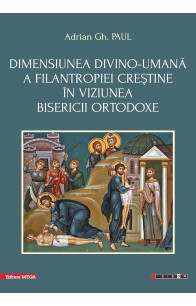Rezultate căutare pentru 'Adrian Ursu��iu'
„The history of the Roman auxilia was for the first time closely examined by C. Cichorius. An early attempt to discuss various topics and aspects related to the place and role of the auxiliary units in the Roman army belongs to G. L. Cheesman. For the study herein, of great significance are the studies of W. Wagner and K. Kraft4, who tackle, others also the units active on the territory of Moesia Superior. J. Beneš approaches the issue of auxiliaries from the two Moesiae and the Dacian provinces, initially in a 1970-study and then in a monograph issued in 1978.
In 1980, P. A. Holder also contributed an article to the basic reference work on the topic of Roman auxilia and their history in the Roman empire during the 1st century AD at a time when the evidence was limited (to some degree represented by military diplomas) and difficult to interpret together with our knowledge on the history auxiliary units known later to be stationed in the mentioned provinces. The special importance of the study consists in the attempt to equate the units recorded in the 1st century with those attested with certainty through 2nd century-military diplomas. The approach has been recently furthered by the publication of two overviews on the displacement of the auxiliaries under Trajan and Hadrian.” Introduction
„The frontiers of the Roman Empire, over 5000 km long, stretch from the Atlantic coast of Scotland, along the Rhine and the Danube, also enclose the Banat region and Transylvania, then going down along the Oriental Carpathians to the Black Sea; from the southern coast of the Black Sea they continue towards the Near East until the Red Sea; then, in North Africa, they line the edge of the Sahara desert until the Atlantic coast of Morocco. Over this entire area, visible traces of fortifications, roads and settlements are still preserved, but numerous monuments still lay hidden underneath the earth. Despite the fact that the Roman frontiers crossed regions with different relief and climate, they constitute a whole in that they were designed to protect Roman territories. The research of these monuments and the preservation policy regarding them was and is unequal in the various presentday states on whose territory traces of the Roman frontier are to be found. Consequently, in the ‘80s of the 20th century, the idea of globally protecting the Roman frontiers, viewed as a unitary monument, was met. In 1987, Hadrian’s Wall in United Kingdom was declared a UNESCO monument. It was followed in 2005 by the German-Raetian sector, on which occasion the UNESCO committee decided to set up the ‘Frontiers of the Roman Empire’ site. (...)
This project through its complexity generated an interdisciplinary approach of the proposed subject stimulating such future attempts in the archaeological research field. By using the latest technical methods of non-destructive investigation the project did not damage the stratigraphy of the archaeological site obtaining instead a high amount of data otherwise time consuming judging from the archaeological excavations perspective contributing also to the preservation of the cultural heritage.” - Introduction
Din capul locului ţinem să subliniem că Biserica Ortodoxă, aflată în faţa unor noi probleme şi provocări ale începutului celui de‑al III‑lea mileniu creştin, nu a formulat până în momentul de faţă o doctrină social‑diaconală concretă, în cadrul unei hotărâri a vreunui Sinod ecumenic sau panortodox, privind relaţia Bisericii cu lumea şi cu societatea, şi care să aibă un caracter normativ pentru lucrarea ei pastoral‑misionară în viaţa socială actuală. Și aceasta nu se datorează neapărat unei „crize” apărute pe tărâm eclesiastic, aşa cum s‑a afirmat deseori, ci mai degrabă a unei reţineri de tip isihastic, de prevenire atentă ori de priveghere asupra noţiunii doctrinei din cadrul societăţilor „nestatornice” de astăzi, tot mai schimbătoare de la o regiune la alta şi de la perioadă scurtă la alta. Aceasta nu înseamnă câtuşi de puţin că Biserica nu a avut şi nu continuă să aibă o atitudine faţă de lume şi problemele ei, desigur privite în mod teologic, şi că nu are o practică autentică manifestată înspre slujba şi slujirea lumii şi a societăţii. Biserica Ortodoxă este prin definiţie o biserică eclesială, comunitară, adică îşi manifestă viaţa în relaţia de comuniune prin mărturisirea de credinţă, prin viaţa de cult şi prin slujirea diaconală a lumii. Ea este o biserică misionară, prin fiinţa ei, ceea ce înseamnă că niciodată nu a neglijat implementarea socială a conţinutului său soteriologic, hristologic şi eshatologic. În esenţă, Biserica Ortodoxă este o biserică a slujirii prin excelenţă, atât a lui Dumnezeu, cât şi a oamenilor, slujirea (diaconia) fiind expresia lăuntrică a ei în relaţia cu lumea şi cu societatea. Cu toate acestea noile provocări ale timpului şi starea de spirit a societăţilor actuale impun Bisericii Ortodoxe cercetarea cu maximă atenţie a problemelor sociale ivite în contextul actual (vezi apariţia perioadei de pandemie – provocat de infecţia Coronavirus Covid 19) şi luarea unei poziţii ferme faţă de acestea, în general, prin formularea unei doctrine filantropice cât mai adecvate. (din „Introducere”)







